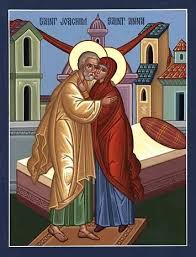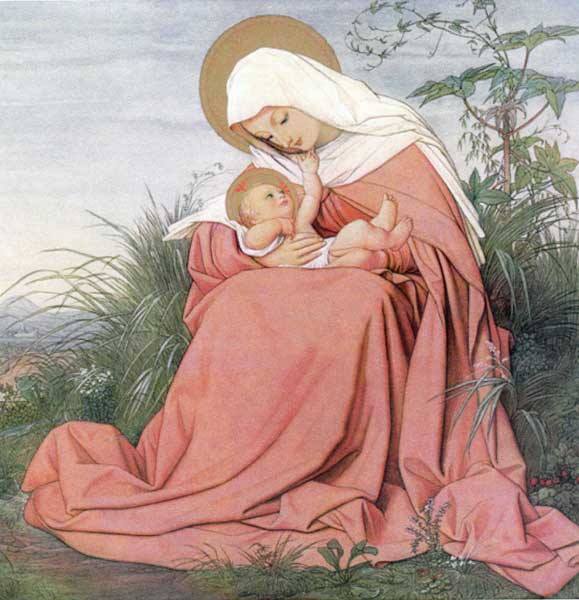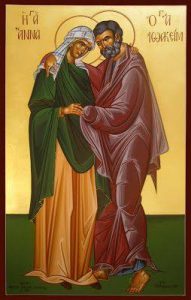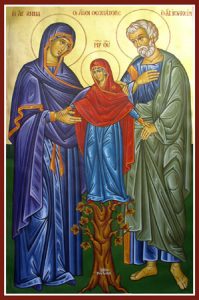 The conception of the all-holy virgin Mary in the womb of Anna is celebrated on December 9 in the Byzantine tradition, for a natural reason, that the Eastern ancients thought a girl was in the womb one day less than a boy. However, in the Ruthenian Church in America [and the Ukrainian Church], the feast is now celebrated together with the Roman Church on December 8, nine months before her birth on September 8, because she is the patron of the United States.
The conception of the all-holy virgin Mary in the womb of Anna is celebrated on December 9 in the Byzantine tradition, for a natural reason, that the Eastern ancients thought a girl was in the womb one day less than a boy. However, in the Ruthenian Church in America [and the Ukrainian Church], the feast is now celebrated together with the Roman Church on December 8, nine months before her birth on September 8, because she is the patron of the United States.
It is clear that this is a preparation for the birth of Christ on Christmas, for the first sticheron of the feast begins: “The barren Anna leaped for joy when she gave birth to Mary the Virgin who in turn will give birth in the flesh to God the Word.” Mary, the daughter of Anna and Joachim by way of natural birth is to be the temple of the Word of God incarnate for our sake and for our salvation.
The Eastern and Western Churches put the accent on different aspects of the feast. In the East, we celebrate the miracle of God taking away the barrenness of Anna’s womb. The Protoevangelium of James portrays the sadness of Joachim and Anna. Joachim lamented, “I have searched whether I am the only one who has not begotten offspring in Israel, and I have found of all the righteous that they had raised up offspring in Israel.” Anna wept, “I will bewail my widowhood, and bewail my childlessness.” (1,3 and 2,1) Two angels came, one to Joachim and another to Anna with a divine message that they would bear a child, even in their old age. When God takes away an emptiness, he fills us more than our faith can grasp, and they gave birth not only a child, but to the new Ark of God’s covenant with us.
The Western Church, on the other hand, puts the accent on Mary’s purity from all sin from her conception, defined by Pope Bl. Pius IX in 1848 as the Immaculate Conception. The theology behind this is that the incarnation of the sinless Word of God must come from a sinless temple, the womb of Mary which was never touched by sin, even from her conception.
 On
On  The conception of the all-holy virgin Mary in the womb of Anna is celebrated on December 9 in the Byzantine tradition, for a natural reason, that the Eastern ancients thought a girl was in the womb one day less than a boy. However, in the Ruthenian Church in America, the feast is now celebrated together with the Roman Church on December 8, nine months before her birth on September 8, because she is the patron of the United States.
The conception of the all-holy virgin Mary in the womb of Anna is celebrated on December 9 in the Byzantine tradition, for a natural reason, that the Eastern ancients thought a girl was in the womb one day less than a boy. However, in the Ruthenian Church in America, the feast is now celebrated together with the Roman Church on December 8, nine months before her birth on September 8, because she is the patron of the United States. December 8 is a Holy Day celebrating the Maternity of Saint Ann (AKA Immaculate Conception of Mary, the Mother of God in the Latin Church). You will also hear the feast as the Conception of the Blessed Virgin Mary.
December 8 is a Holy Day celebrating the Maternity of Saint Ann (AKA Immaculate Conception of Mary, the Mother of God in the Latin Church). You will also hear the feast as the Conception of the Blessed Virgin Mary.